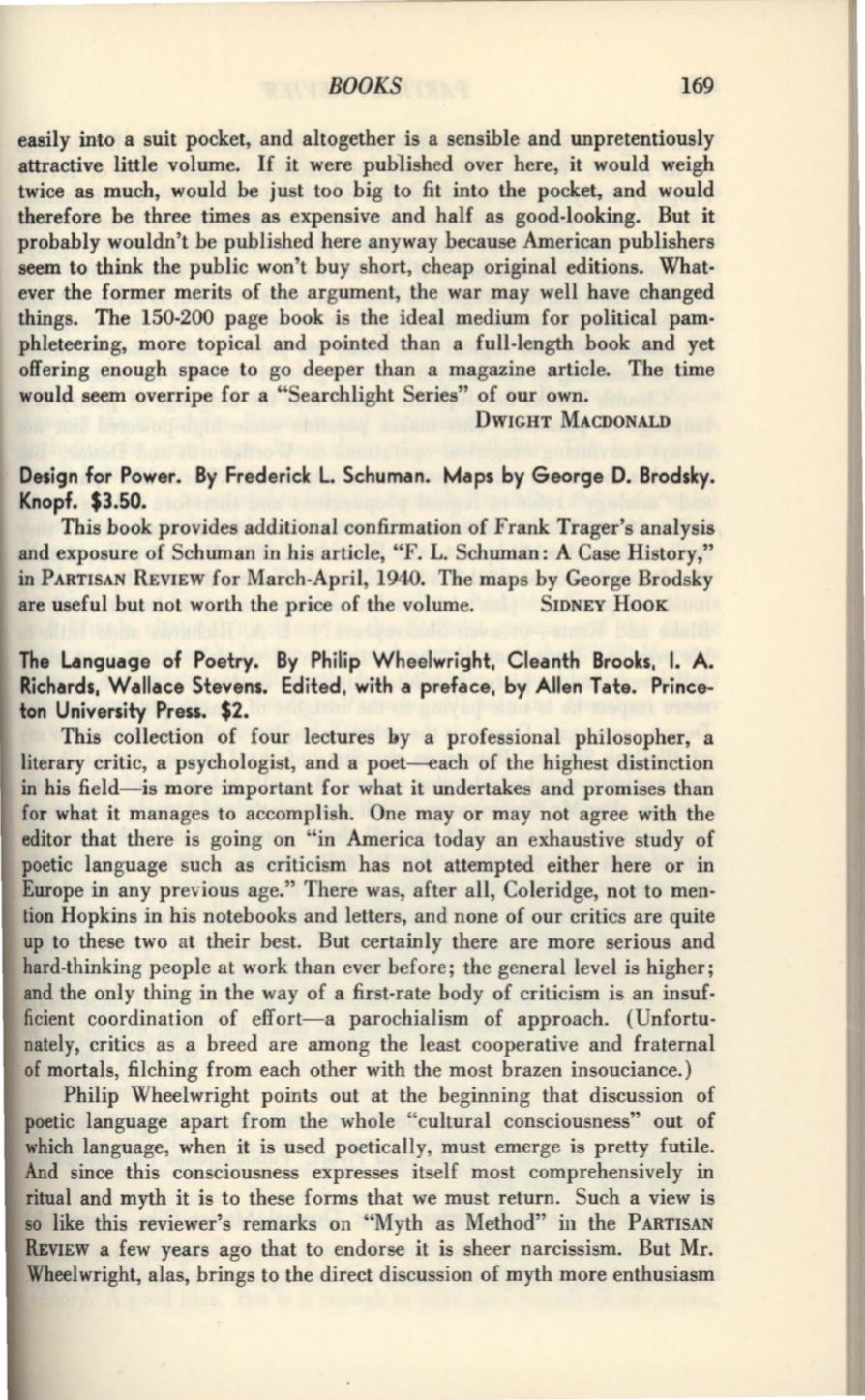
BOOKS
169
easily into a suit pocket, and altogether is a sensible and unpretentiously
attractive little volume.
If
it were published over here, it would weigh
twice as much, would be just too big to fit into the pocket, and would
therefore be three times as expensive and half as good-looking. But it
probably wouldn't be published here anyway because American publishers
seem to think the public won't buy short, cheap original editions. What–
ever the former merits of the argument, the war may well have changed
things. The 150-200 page book is the ideal medium for political pam–
phleteering, more topical and pointed than a full-length book and yet
offering enough space to go deeper than a magazine article. The time
would seem overripe for a "Searchlight Series" of our own.
DWIGHT MACDONALD
Design for Power. By Frederick
L.
Schuman. Maps by George D. Brodsky.
Knopf. $3.50.
This book provides additional confirmation of Frank Trager's analysis
and exposure of Schuman in his article, "F. L. Schuman: A Case History,"
in
PARTISAN REVIEW for March-April, 1940. The maps by George Brodsky
are useful but not worth the price of the volume.
SIDNEY HooK
The Language of Poetry. By Philip Wheelwright, Cleanth Brooks, I. A.
Richards, Wallace Stevens. Edited, with a preface, by Allen Tate. Prince–
ton University Press. $2.
This collection of four lectures by a professional philosopher, a
literary critic, a psychologist, and a poet--each of the highest distinction
in
his field-is more important for what it undertakes and promises than
for what it manages to accomplish. One may or may not agree with the
editor that there is going on "in America today an exhaustive study of
poetic language such as criticism has not attempted either here or in
Europe in any previous age." There was, after all, Coleridge, not to men–
tion Hopkins in his notebooks and letters, and none of our critics are quite
up to these two at their best. But certainly there are more serious and
hard-thinking people at work than ever before; the general level is higher;
and the only thing in the way of a first-rate body of criticism is an insuf–
ficient coordination of effort-a parochialism of approach. (Unfortu–
nately, critics as a breed are among the least cooperative and fraternal
of mortals, filching from each other with the most brazen insouciance.)
Philip Wheelwright points out at the beginning that discussion of
poetic language apart from the whole "cultural consciousness" out of
which language, when it is used poetically, must emerge is pretty futile.
And since this consciousness expresses itself most comprehensively in
ritual and myth it is to these forms that we must return. Such a view is
so like this reviewer's remarks on "Myth as Method" in the PARTISAN
REVIEW a few years ago that to endorse it is sheer narcissism. But Mr.
Wheelwright, alas, brings to the direct discussion of myth more enthusiasm


